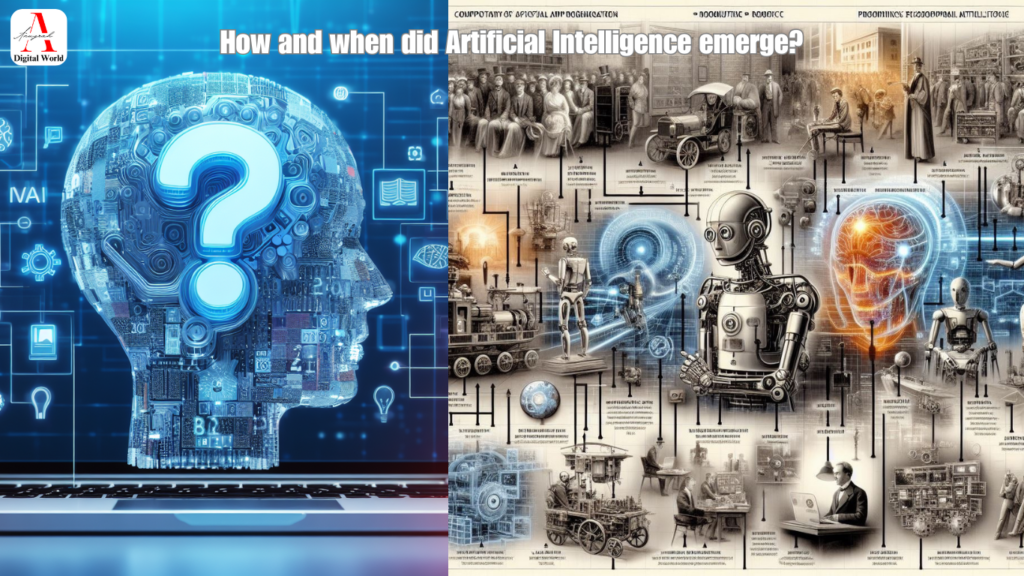Rise of Artificial Intelligence
The emergence of Artificial Intelligence (AI) can be traced back to several key events and individuals throughout history:

Early Roots of Artificial Intelligence:
- 19th Century: The concept of intelligent machines and artificial life was explored in works by early writers like Mary Shelley and Charles Babbage.
- 1940s: Alan Turing’s work on theoretical models of computation and his paper “Computing Machinery and Intelligence” (1950) laid the groundwork for AI research.
- 1956: The Dartmouth Workshop, attended by pioneers like John McCarthy, Marvin Minsky, and Claude Shannon, marked the formal birth of AI as a field of study.
Early Development of Artificial Intelligence:
- 1950s-1960s: Early AI research focused on symbolic AI, using logic and reasoning to solve problems. Programs like Newell and Simon’s General Problem Solver (GPS) and Minsky’s SNARC demonstrated early successes.
- 1970s: AI research faced challenges due to limitations in computing power and theoretical understanding. This period, known as the “AI Winter,” saw funding cuts and reduced research activity.
- 1980s: The development of expert systems, which applied AI to specific domains, provided practical applications and renewed interest in the field.
Modern Era of Artificial Intelligence:
- 1990s-Present: The emergence of powerful computers, massive datasets, and new algorithms like neural networks fueled significant advancements in AI.
- 2010s: Deep learning techniques achieved breakthrough results in areas like image recognition, natural language processing, and speech recognition. AI began to impact various industries and everyday life.
- 2020s: AI continues to evolve rapidly, with applications expanding to numerous domains and raising ethical questions about its development and use.
Key Figures of Artificial Intelligence:
- Alan Turing: Pioneered theoretical models of computation and proposed the Turing Test, a benchmark for machine intelligence.
- John McCarthy: Coined the term “artificial intelligence” and contributed foundational work in logic, reasoning, and AI languages.
- Marvin Minsky: Played a key role in developing early AI research programs and advocated for the importance of machine learning.
- Geoffrey Hinton: One of the pioneers of deep learning and neural networks, leading to significant advances in AI capabilities.
Notable milestones of Artificial Intelligence:
- 1965: ELIZA, a chatbot simulating a Rogerian therapist, demonstrated early progress in natural language processing.
- 1997: Deep Blue, an IBM chess-playing computer, defeated reigning world champion Garry Kasparov, showcasing AI’s capabilities in complex games.
- 2011: IBM’s Watson won the game show Jeopardy!, demonstrating AI’s ability to process and understand natural language.
- 2016: Google’s AlphaGo defeated Go champion Lee Sedol, marking another significant milestone in AI’s ability to compete in complex strategic games.
The emergence of AI has been a gradual process with contributions from numerous individuals and advancements over several decades. While the field still faces challenges and ethical considerations, it continues to evolve at an unprecedented pace, shaping the future of various industries and aspects of our lives.
Read also

